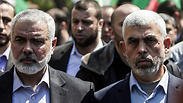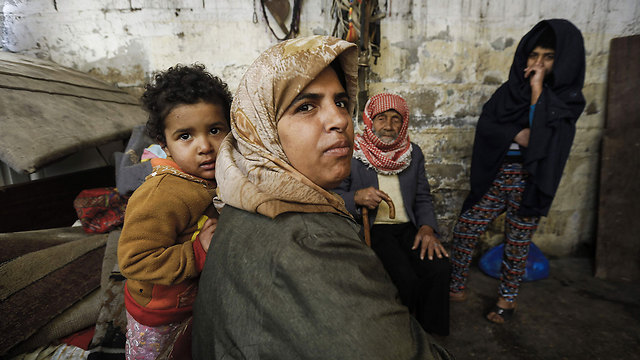
Israel must take advantage of Hamas’ weak spot
Analysis: It’s true that Gazans hate Israel and want to see it destroyed, but they also want to live. Israel, however, is making no effort to create some kind of distinction between the leadership and the population in order to present an alternative to the military plan.
Israel is threatening that any damage to the project will claim a heavy price, which could reach an overall military conflict. For this purpose, the IDF is carrying out public maneuvers, more or less—to make Hamas see and comprehend. An occasional accurate aerial bombing of infrastructure targets is aimed at emphasizing the message that Israel will not hesitate to launch a war. The truth is, however, that Israel needs a state of calm in order to complete the Obstacle, which is supposed to provide an alternative solution to the tunnels and infiltrations. The alleged Israeli assassination of Mazan Fukha, who headed the West Bank committee in Gaza, is likely part of a different story, but it joins the noisy escalation choir.

For some reason, people here still believe that we can read the other side. Israeli officials estimate that Hamas, a decade after rising to power, has formed a world view of a state, with public responsibility, and that it has no intention of losing the “miracle” of establishing a Hamas-controlled Sunni state in Gaza. The threat of losing this historic achievement is Israel’s main leverage, which is why Israel is threatening a military conflict which would include massive use of fire from the very beginning.
Like in all the activities vis-à-vis Gaza, the next war will have no political purpose in the form of an agreement or a change of government in the strip. The next war too will be waged with the goal of “wearing out Hamas, engraving the IDF’s might into the Palestinian consciousness, delaying the next conflict, renewing deterrence, etc.” The price will be paid by the population in the strip—the same population which Israel disregards and isn’t doing a thing to try to distinguish it from the Hamas government, which is leading it to destruction.
A day after Yahya Sanwar’s election as head of Hamas’ political bureau in Gaza, a woman set herself on fire outside his home in an act of protest. There was no mention of that incident in Israel—perhaps because such an incident might interfere with the narrative built by Israel, that Hamas and the Gaza population are one and the same. It’s true that the public in Gaza wants to see Israel destroyed. There is deep hatred there. This public also wants to live, however.
The woman who set herself on fire outside the Hamas leader’s home is proof that the public there is not stupid and that it understands the ramifications of Sanwar’s election too. Sanwar rose to power on the sharp tips of the military wing’s spears, while performing political maneuvers which allowed him to boost his power at the political wing’s expense. As far as the Palestinian public in the strip is concerned, the appointment reflects a list of priorities that does not concern the public: Investment in tunnels, weapons, special military abilities, and only then an improvement of the economic situation and the citizen’s welfare.
This is Hamas’ weak spot, but Israel is not even trying to create some kind of distinction between the leadership and the population. The only attempt is the website of the coordinator of the government’s activities in the territories, which tells the Gazans how corrupt their government is. The population in Gaza is treated in such a superficial manner, that even in IDF slides the population there is still comprised of 1.9 million people—although they have already crossed the 2 million mark by tens of thousands of peoples. One-third of the families in Gaza live in degenerating poverty of NIS 1,000 a month. Israel sends thousands of trucks to the strip ever week, but fails to mention that 60 percent of them carry aggregates (raw materials) which have no effect on the population’s welfare.
Israel should talk to the residents over Hamas’ head by encouraging the construction of infrastructures and transferring energy and water. Not out of kindness, God forbid, but out of an egoistic national interest: To present an alternative to the military plan in order to try to get through the coming years peacefully.
(Translated and edited by Sandy Livak-Furmanski)










